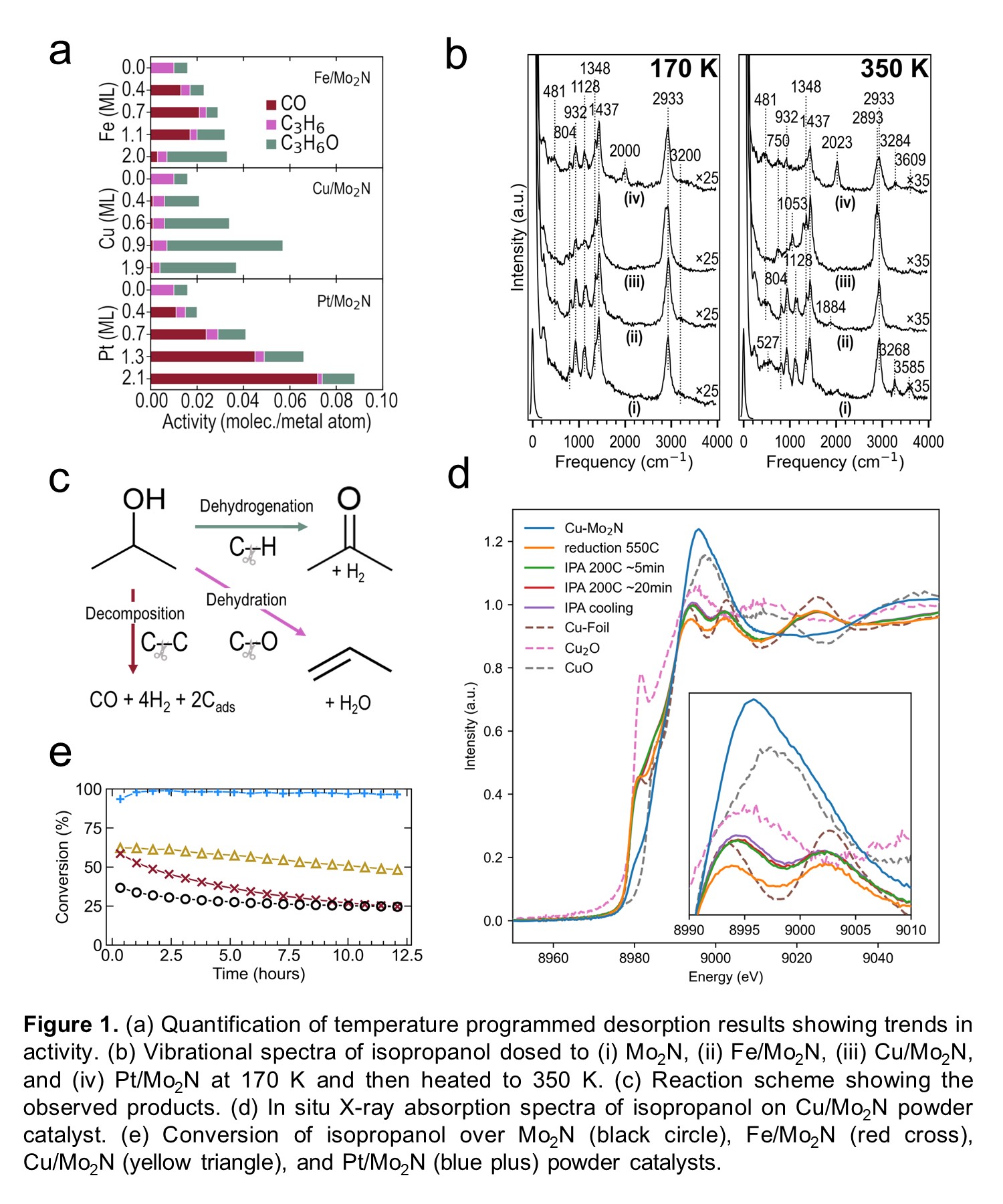2023 AIChE Annual Meeting
(677a) Controlling C?O, C–C, and C–H Bond Scission Pathways on Metal-Modified Molybdenum Nitride Catalysts
Authors
Zhexi Lin - Presenter, Columbia University
William N. Porter, The Dow Chemical Co.
Jingguang G. Chen, University of Delaware
Hilda Mera, Carnegie Mellon University
Ping Liu, Brookhaven National Laboratory
John Kitchin, Carnegie Mellon University
Biomass valorization is a method of producing commodity chemicals from renewable materials by selectively cleaving bonds. The dehydrogenation of biomass-derived alcohols has recently gained interest as a way of producing value-added carbonyl compounds as well as H2. In addition to several transition metal alloys, molybdenum nitride (Mo2N) catalysts have been identified as promising materials for this reaction. Furthermore, other reactions of alcohols including reforming and dehydration on metal-modified Mo2N model surfaces have been studied as important steps in biomass upgrading. Therefore, in this work, the tunable selectivity of Fe-, Cu-, and Pt-modified Mo2N model surfaces and powder catalysts was investigated using an isopropanol probe molecule, which has additional interest as a liquid organic hydrogen carrier. The model surface results showed clear trends in the selectivity toward decomposition, dehydration, and dehydrogenation that were dependent on both the type and coverage of the metal overlayer. These findings were then correlated with those on powder catalysts using reactor experiments and in situ synchrotron techniques to demonstrate how studies of model surfaces can inform the design of supported catalysts. This work shows that fundamental information about the reactivity and intermediates on Mo2N-based model surfaces can be applied to understand the activity of metal-modified Mo2N powder catalysts, and further demonstrates that these catalysts have potential for upgrading biomass-derived oxygenates.


